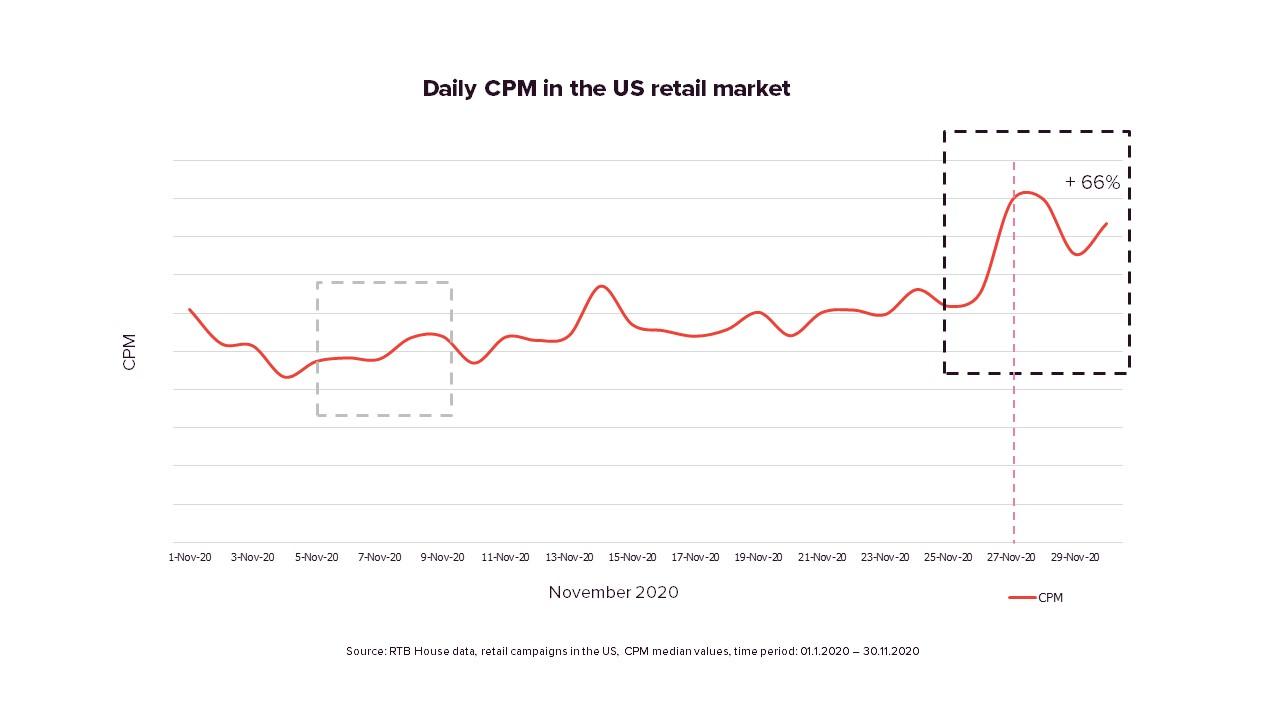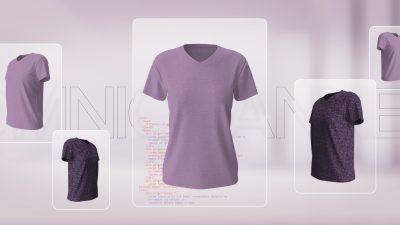Last Updated on: 26th May 2024, 07:13 pm
Everyone in the fashion industry knows that even small changes can make a big difference, and the same rules apply to digital marketing. Despite making up just 13.7% of total fashion purchases, online sales were worth an impressive 752.5 billion USD in 2020, and are expected to be worth 1,164.7 billion USD by the end of 2025. This means that fashion brands that can maximize the performance of their digital marketing strategy can build a real competitive advantage.
Key Points:
- Online fashion sales are expected to reach 1,164.7 billion USD by 2025
- The fashion industry faces some significant challenges due to dead stock, competition, and supply chain challenges
- e-commerce sales channels provide new opportunities to overcome these challenges
- RTB House Retargeting can help fashion companies make the most of their online sales channels
Table of contents:
- Online shopping provides fashion companies with more opportunities to reach customers
- Performance marketing can unlock the potential of e-commerce for fashion retailers
- Retargeting helps fashion marketers make the most of online advertising
The fashion industry naturally wants to reach customers online; however, it comes with a number of unique challenges. Let’s dive into the world of online fashion retail, and discover how companies can leverage performance marketing techniques like retargeting for stronger sales.
Online shopping provides fashion companies with more opportunities to reach customers
Before we dive into the deep end, let’s take a moment to look at why online presence is so important for fashion companies. The first reason comes down to the key driver of fashion sales: impulse buying.
Around 43% of all purchases in the fashion space are impulse buys, and compelling creatives can help to boost this figure further. For example, our own internal campaign data demonstrates an uplift in sales between 30-50% during promotional campaigns, where compelling creatives are typically used to entice users to make a purchase. Other methods, such as retargeting, can provide more opportunities for companies to connect with their customers, and increase the chance of someone purchasing a product on impulse.
Another key benefit of e-commerce is that it enables fashion companies to target customers interested in more niche products. This can even turn what was a problem into a big opportunity. For an example, look at the challenge posed by “dead stock”, or clothing that is out of season and hasn’t sold. This problem costs the U.S. fashion industry 50 billion USD annually.
Traditionally, this stock was burned or otherwise destroyed. However, many cost-conscious shoppers would like to access high quality clothing, and discounted dead-stock is an enticing offer. Retargeting can combat this problem in two ways. The first way is by using a well conducted performance marketing campaign to sell more units, reducing the risk of it becoming deadstock in the first place.
If some stock fails to sell, e-commerce stores can use the same methods to turn deadstock into a desirable asset. Companies specializing in selling Deadstock, like Queen of Raw, have made this model work well, and the company posted quarter-on-quarter growth rates in excess of 125%.
This makes a compelling case for creating a comprehensive digital marketing strategy, but what is the best way to maximize the opportunities on offer?
Performance marketing can unlock the potential of e-commerce for fashion retailers
That’s where performance marketing comes into play. When properly implemented, these techniques can help to increase the Customer Lifetime Value (CLV) of customers, while also providing a boost to sales, the Average Order Value (AOV), revenue, and other key performance metrics for fashion companies. Performance marketing campaigns are also flexible, and it is possible for companies to scale campaigns up or down quickly in order to respond to specific events, such as holidays or sales, and optimize their overall campaign budget.
While there are a number of effective approaches that retailers can leverage, when conducting our own campaigns we have found that an approach that focuses on combining good data with Deep Learning powered retargeting is particularly effective.
Performance marketing helps to solve many fashion industry pain-points
Performance marketing can solve a number of challenges that fashion retailers face. For example, around 70% of users abandon their carts when making a purchase. Fashion retailers can re-engage these users with personalized promotions or other messages in order to maximize the chance of making a sale.
It can also encourage dormant users to re-engage with a brand by using content to remind these users about upcoming sales, new products, or even just about something they’ve looked at previously. To understand the true utility of performance marketing, let’s take a look at how it works.
Good Data enables powerful performance marketing techniques
The foundation of performance advertising is good data. This is not only used to define high potential target demographics, but also to understand what sort of content they will connect with, and what kinds of products they are likely to be interested in.
Internal data can be leveraged to weigh advertisements based on what companies need to sell now. For example, if the data shows that a company has a glut of jeans, they can prioritize content and users that would be interested in purchasing jeans, and tailor their offering accordingly.
External data can be used to effectively target users. Technology like Deep Learning has made it possible to gather detailed insights about visitors to particular sites. This provides a privacy-friendly way to improve the performance of a marketing campaign.
A powerful example of this method is personalized marketing. When done correctly, this approach can cause a sales lift of 10% with a return on investment (ROI) of five to eight times marketing spend. The concept is simple: brands can use good data to predict what kind of product a specific customer would be interested in. Fashion sites can then display content that highlights those brands or product categories, and drive stronger conversion rates.
These approaches are extra effective during competitive sales seasons
Performance marketing can be particularly powerful during promo periods. These dates are key for many fashion retailers, which means that the Cost Per Mile (CPM) rate rises dramatically in the weeks leading up to Black Friday, Cyber Monday, and other major promo periods.

This puts more onus on companies using their budgets efficiently. One great way to do this is to target dormant customers. Our own data shows that during sales periods, around 37% of purchases come from dormant users and new users.
Engaging these users requires a multifaceted approach that encompasses all aspects of performance marketing. This means that they need to be shown engaging creatives, that highlight personalized offers, at the right moment. It is also important to use methods like retargeting to create as many opportunities to connect with a customer as possible, maximizing the “buying impulse” many consumers have during promo seasons.
Leveraged correctly, this approach pays real dividends. When our team conducted campaigns during Cyber Monday, we used a combination of performance marketing techniques that contributed to a sales lift of up to 42% (RTB House internal data).
Retargeting helps fashion marketers make the most of online advertising
RTB House has staked its reputation on our ability to offer novel solutions to online advertising in a variety of industries. One of our most successful areas is online fashion, and we have developed a variety of sophisticated techniques that can help any brand in the fashion industry thrive.
Want to learn how your business can better leverage online sales channels? Get in touch with us, and find out how RTB House can help.





